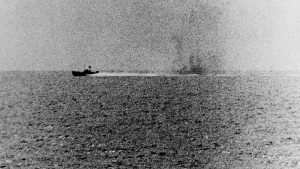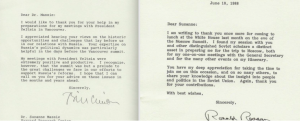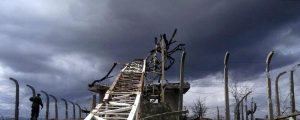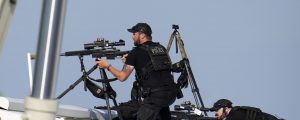The Gulf of Tonkin incident – the infamous false flag that triggered the Vietnam War – the bloodiest US conflict of the second half of the 20th century, marked its 60th anniversary on Friday.

False flag tactics – i.e. acts or threats of violence designed to look like they were committed by someone else to justify aggression, have been a key tool of American foreign policy going back well over a century. Here are a few of the most notorious examples of US policymakers’ use of false flags, starting with the Gulf of Tonkin incident.
On August 2, and 4, 1964, the US Navy reported a series of attacks on the USS Maddox destroyer in international waters in the Gulf of Tonkin east of North Vietnam by North Vietnamese torpedo boats.
- On August 7, 1964, President Lyndon Johnson got authorization from Congress to “take all necessary measures to repel any armed attack” against US forces in Southeast Asia, leading to the deployment of combat troops, and a brutal bombing campaign in Vietnam, Laos and Cambodia using three times more ordnance than was dropped during all of WWII.
- In 2003, former Johnson administration secretary of state Robert McNamara admitted that the attack on the Maddox never took place. In 2005, declassified files revealed that the National Security Agency deliberately distorted intelligence on the incident to justify intervention.
 U.S. Huey helicopter spraying Agent Orange over Vietnam – Sputnik International, 1920, 12.05.2020
U.S. Huey helicopter spraying Agent Orange over Vietnam – Sputnik International, 1920, 12.05.2020
US Veterans Stationed in Guam During Vietnam War Likely Exposed to Agent Orange – White Paper
12 May 2020, 21:00 GMT
On February 15, 1898, an explosion rocked the battleship USS Maine in Havana harbor, killing over two thirds of its crew. Washington immediately blamed Spain, which was in control of Cuba at the time, and after several months of preparations declared war. Spain was ultimately forced to hand its colonies in Latin America and Asia over to the US.
An investigation in 1976 by US Admiral Hyman G. Rickover revealed that the explosion may have caused by a spontaneous combustion of the ship’s coal bunkers. In Cuba, it’s widely held that the US government deliberately blew up the USS Maine to justify the seizure of Spain’s overseas territories.
 Venezuela’s President Nicolas Maduro speaks during a meeting with his ministers at the Humboldt Hotel at El Avila mountain in La Guaira, Venezuela, Thursday, Sept. 21, 2023. – Sputnik International, 1920, 04.04.2024
Venezuela’s President Nicolas Maduro speaks during a meeting with his ministers at the Humboldt Hotel at El Avila mountain in La Guaira, Venezuela, Thursday, Sept. 21, 2023. – Sputnik International, 1920, 04.04.2024
Secret US Army, CIA Bases Gearing Up for Escalation in Disputed Essequibo Region – Maduro
4 April, 06:42 GMT
- On April 28, 1965, the US invaded the Dominican Republic on the pretext that US citizens living in the country were in danger from Francisco Caamano’s leftist Constitucionalista government. In actuality, US Ambassador W. Tapley Bennett Jr described the US’s real reason for intervention, known as Operation Power Pack – to “prevent another Cuba” – i.e. an independent Caribbean nation outside the US orbit.
- On October 25, 1983, the US invaded the small Caribbean island of Grenada to topple a Cuba-friendly government. The pretext? The fate of 600 American medical students ostensibly endangered and held hostage by local authorities. Years later, it emerged that the students were never hostages, or in any real danger, and that the Reagan administration had deliberately barred them from leaving the island by cutting its transport links to neighboring countries.
 Letters from former US Presidents Bill Clinton and Ronald Reagan provided to Sputnik courtesy of Suzanne Massie, who served as White House adviser during the Reagan administration. – Sputnik International, 1920, 09.06.2023
Letters from former US Presidents Bill Clinton and Ronald Reagan provided to Sputnik courtesy of Suzanne Massie, who served as White House adviser during the Reagan administration. – Sputnik International, 1920, 09.06.2023
Ex-Reagan Aide Says Gifted Archive to Russia’s Presidential Library to Spark Peace Talks
9 June 2023, 16:09 GMT
- On December 20, 1989, the US began an invasion of Panama, ostensibly to depose previously US-friendly dictator General Manuel Noriega – who was wanted on drug trafficking charges, to protect Americans and secure the strategic Panama Canal. The invasion, dubbed Operation Just Cause, was formally authorized after a US Marine operating in Panama was shot and killed at a Panama Defense Forces roadblock under questionable circumstances. Some historians have since questioned whether the operation was predicated on a false flag designed to replace Noriega with a more pliable client.
- Through the 1990s, US and NATO forces launched a series air policing, no fly zone and bombing campaigns over Yugoslavia, citing alleged rights violations and war crimes targeting civilians – invariably by the Serbs. In early 1999, citing claims of a massacre of Kosovar Albanians in the village of Recak, Kosovo, NATO began planning a large-scale bombing operation to force Yugoslav military forces out of the Serbian province, followed by an occupation using alliance ‘peacekeepers’. This false flag kicked off a 78-day bombing campaign of Yugoslavia in March 1999, killing over 1,000 people directly and contaminating wide swathes of Serbia and Montenegro with depleted uranium from US missiles and bombs, and culminating in the establishment of Camp Bondsteel – the largest American military base in the Balkans. A 2001 forensic report cast doubt on the massacre claims, and the Serbian government has never accepted NATO’s justification.
 An unidentified Yugoslav Army officer checks for possible radioactive contamination at a ruined television relay station that was damaged during the NATO bombing of Yugoslavia, between Bratoselce and Reljan villages near the southern Serbian town of Presevo Tuesday Jan. 9, 2001. – Sputnik International, 1920, 27.03.2024
An unidentified Yugoslav Army officer checks for possible radioactive contamination at a ruined television relay station that was damaged during the NATO bombing of Yugoslavia, between Bratoselce and Reljan villages near the southern Serbian town of Presevo Tuesday Jan. 9, 2001. – Sputnik International, 1920, 27.03.2024
NATO’s Use of Depleted Uranium Linked to Cancer Epidemics – Serbian Lawyer
27 March, 08:20 GMT
- On February 5, 2003, US Secretary of State Colin Powell appeared before the UN, waving a prop vial of anthrax representing Iraq’s alleged weapons of mass destruction program. A month and a half later, the US and Britain kicked on an unprovoked invasion of Iraq, killing as many as a million people and triggering decades of instability in the region. In 2005, after it was conclusively revealed that Iraq did not have WMDs, Powell insisted that he did not mislead UN, because he did not know at the time that the information in his report was a lie, and blamed dishonest actors in US intelligence.
- In 2007, retired US General Wesley Clark revealed that the Pentagon had begun planning a large-scale invasion of seven Muslim countries (Iraq, Syria, Lebanon, Libya, Somalia, Sudan and Iran) in the immediate aftermath of the 9/11 terror attacks – which none of these countries had anything to do with.
 Sputnik International, 1920, 17.07.2024
Sputnik International, 1920, 17.07.2024
US Intel’s Attempt to ‘Scapegoat’ Iran With Trump Murder Plot Claim Smells Like Iraqi WMDs 2.0
17 July, 16:46 GMT
False Flags Plots Not Fully Realized
Not all of the false flag operations planned and plotted by US intelligence were entirely ‘successful’ in terms of triggering a war. Here are a couple examples.
- 1962: Operation Northwoods: Three years after the overthrow of US-friendly Cuban dictator Fulgencio Batista, the Defense Department and the CIA concocted a proposal to stage a series of terrorist acts – from murders and ship sinkings to bombings of American cities, and blame it on Cuba to justify an invasion of the island. President Kennedy rejected the idea. The program’s existence remained a secret until 1997.
- 2017/2018 Syrian close call: On April 7, 2017 and again in April 14, 2018, the US and its allies launched a series of air and cruise missile strikes targeting Syrian military bases and cities. The justification? Claims that the Syrian government had used chemical weapons against civilians in areas of the country held by foreign-backed jihadist militias. The US and its allies never proved its allegations before launching the aggression, and in 2019, whistleblowers stepped forward to reveal that an Organization for the Prohibition of Chemical Weapons report on the 2018 attack covered up evidence casting doubt on Syria’s responsibility for the crime.
- The chemical false flags did not prompt a full-scale US invasion and occupation of Syria, but have served as a justification for Washington’s crimes against the country – including the refusal to return control of the oil and food-rich northeastern third of Syria back to Damascus, and a brutal sanctions regime known as the Caesar Act.
 A child poses for a picture on the banks of a river polluted by a nearby oil field in the countryside of Rmeilan, in Syria’s northeastern Hasakeh province on August 14, 2023. – Sputnik International, 1920, 11.09.2023
A child poses for a picture on the banks of a river polluted by a nearby oil field in the countryside of Rmeilan, in Syria’s northeastern Hasakeh province on August 14, 2023. – Sputnik International, 1920, 11.09.2023
Syria Reveals Staggering Cost of US Looting and Sabotage of Energy Sector
11 September 2023, 18:50 GMT
By Ilya Tsukanov
Published by Sputnik Globe
Republished by The 21st Century
The views expressed in this article are solely those of the author and do not necessarily reflect the opinions of 21cir.com
